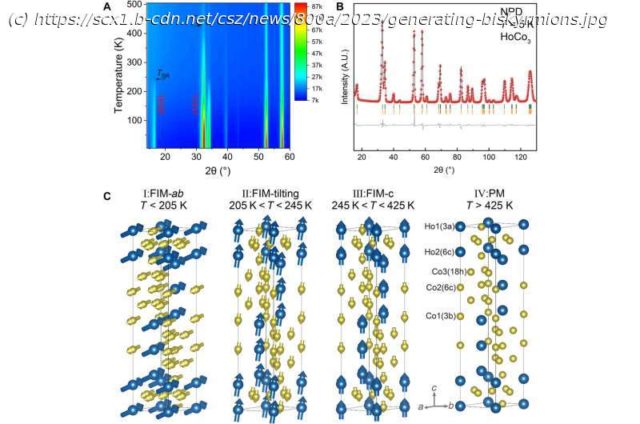Magnetic skyrmions have received much attention as promising, topologically protected quasiparticles with applications in spintronics. Skyrmions are small, swirling topological magnetic excitations with particle-like properties. Nevertheless, the lower stability of magnetic skyrmions only allow them to exist in a narrow temperature range, with low density of the particles, thus implying the need for an external magnetic field, which greatly limits their wider applications.
Magnetic skyrmions have received much attention as promising, topologically protected quasiparticles with applications in spintronics. Skyrmions are small, swirling topological magnetic excitations with particle-like properties. Nevertheless, the lower stability of magnetic skyrmions only allow them to exist in a narrow temperature range, with low density of the particles, thus implying the need for an external magnetic field, which greatly limits their wider applications.
In a new report published in Science Advances, Yuzhu Song and a team of researchers formed high-density, spontaneous magnetic biskyrmions without a magnetic field in ferrimagnets via the thermal expansion of the lattice.
The team noted a strong connection between the atomic-scale ferrimagnetic structure and nanoscale magnetic domains in a ferrimagnet compound by using neutron powder diffraction and Lorentz transmission electron microscopy measurements.
Song and team explored the critical role of negative thermal expansion in generating biskyrmions in the ferrimagnet compound due to magneto-elastic coupling effects, to compare the behavior of the material with positive thermal expansion.
Magnetic skyrmions are nanoscale magnetic domain structures with topological protection. Their unique features and small size, and the lower energy consumption alongside electric-current driven behavior make them promising candidates for applications in spintronic storage devices.
Since their discovery in 2009, magnetic skyrmions have entered a period of rapid development. Materials scientists and physicists have found topological spin structures to contain diverse topological charges, which include skyrmions, biskyrmions, anti-skyrmions, merons and antimerons.






